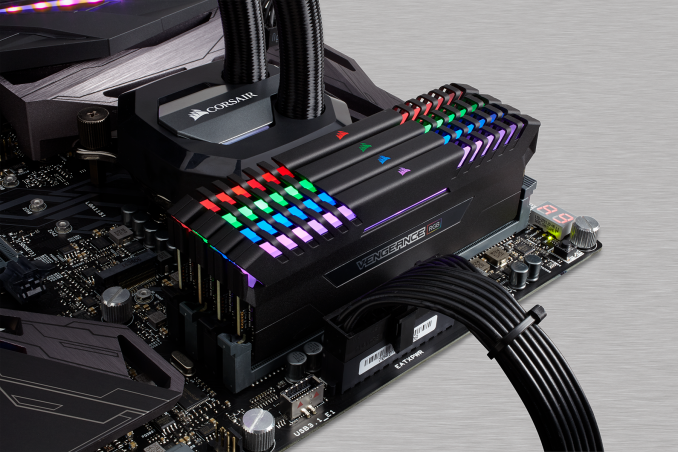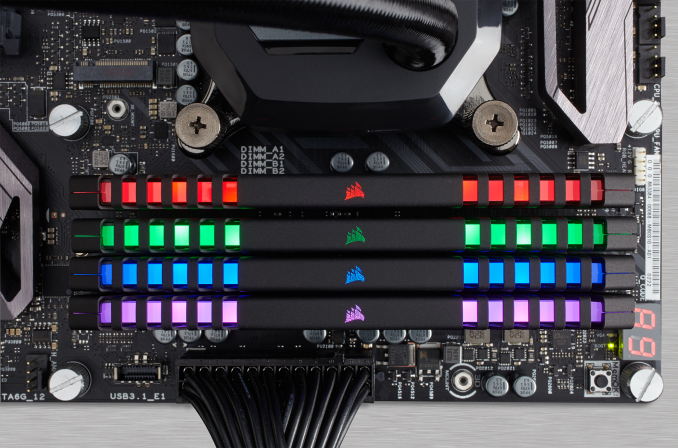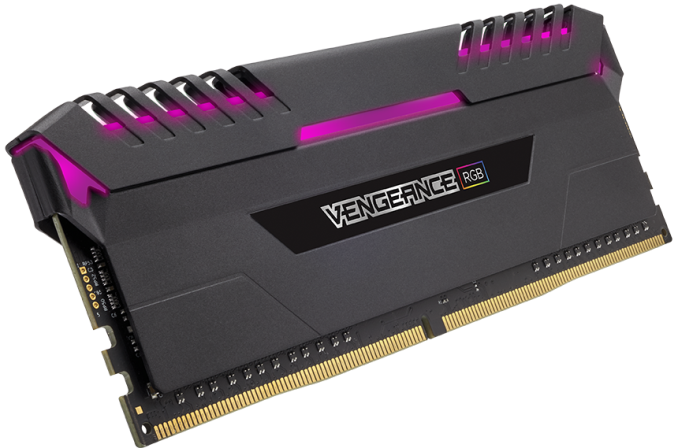Il trailer di Destiny 2 sarà svelato il 30 marzo. Per ora bisogna accontentarsi di un breve teaser che ha come protagonista Cayde-6 doppiato dal fantastico Nathan Fillion. Nel frattempo ad incendiare gli animi della community ci pensa una piccola scritta che compare alla fine del teaser:
Categoria: HardwareSoftware
Infinity Display, 10nm SoCs and recongizable design
After months of endless rumors, leaks, and predictions, Samsung has now officially unveiled its new flagship Galaxy S8 and Galaxy S8+ flagship smartphones.
Both smartphones are quite similar in terms of hardware, specifications and features with the key difference in size. The Galaxy S8 measures at 148.9x68x1x8.0mm and weighs 155g, which is pretty tight for a smartphone that comes with a 5.8-inch screen. The Galaxy S8+ is slightly larger at 195.5×73.4×8.1mm and weighs 173g but comes with a 6.2-inch screen.
Both screens are called Infinity Display and these are Super AMOLED panels with 2960×1440 Quad HD+ resolution, 18.5:9 aspect ratio and 570ppi pixel density (529ppi on the 6.2-inch Galaxy S8+). Screens also come with Mobiel HDR Premium certification and are, in addition to the back, also protected by Gorilla Glass 5.
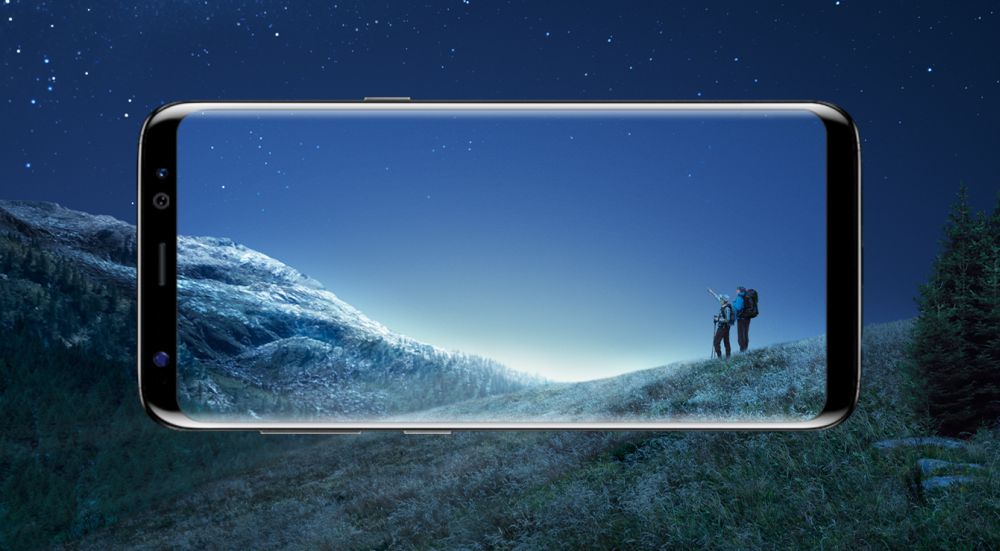
In order to keep both smartphones smaller, Samsung decided to ditch the “physical” home button, which is replaced by pressure-sensitive on screen buttons with tactile feedback that should rival Apple’s solution. While it did ditch some buttons, Samsung also moved the fingerprint scanner to the back as well as added a dedicated Bixby button on the side, just below the volume buttons. Both smartphones also come with IP68 certification, which means they are dust and water resistant.
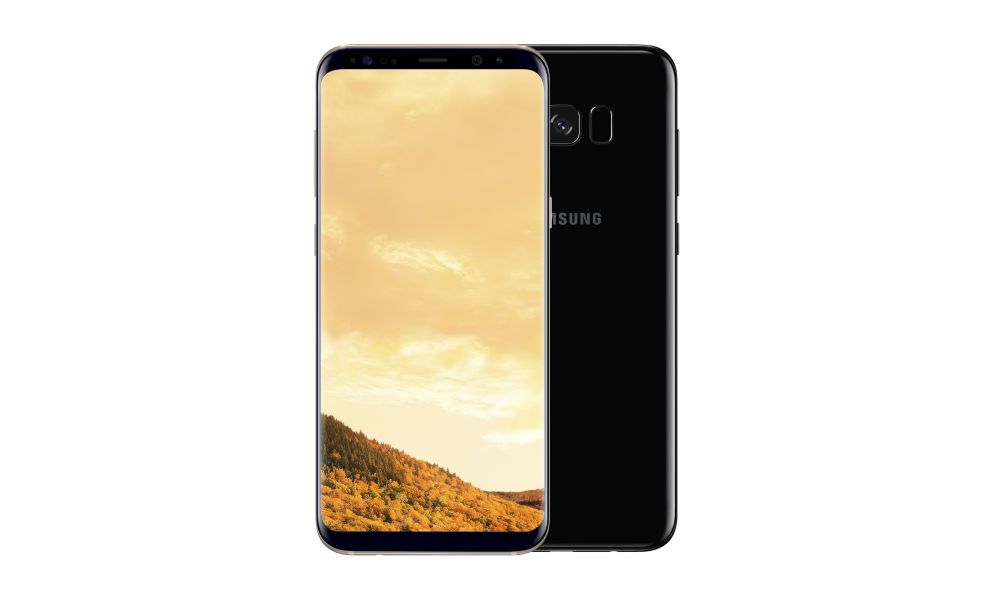
As far as the main camera goes, both smartphones come with the same 12-megapixel f/1.7 Dual Pixel camera with Smart OIS that we have seen on the Galaxy S7, but with slight enhancements to image processing, so it should be a bit more snappier and give better pictures under low-light. The front side camera got boosted to 8-megapixel sensor with auto-focus and face detection.
Hardware-wise, Samsung was quite keen to brag about the new 10nm octa-core SoCs. Depending on the region, the new Galaxy S8 and Galaxy S8+ will be first smartphones with Qualcomm’s Snapdragon 835 or Samsung’s Exynos 8895 SoCs. Both will also pack 4GB of LPDDR4 RAM and 64GB of UFS 2.1 storage, expandable up to 256GB via microSD card slot. Some regions will also get 6GB/128GB versions.
The performance should be very similar and both smartphones will get LTE Cat.16 support with transfer speeds of up to 1GBps. The rest of the specifications include standard connectivity options, like dual-band 802.11ac WiFi, Bluetooth v5.0, USB Type-C, NFC, GPS and more. It also got an Iris sensor on the front, next to standard accelerometer, barometer, gyro, fingerprint, heart rate, proximity, pressure, and other sensors it has.
The Galaxy S8 comes with a 3,000mAh battery while the bigger Galaxy S8+ has a 3,500mAh battery. Both will feature Samsung’s Adaptive Fast Charging fast charging via USB Type-C port as well as fast wireless charging (WPC, PMA).
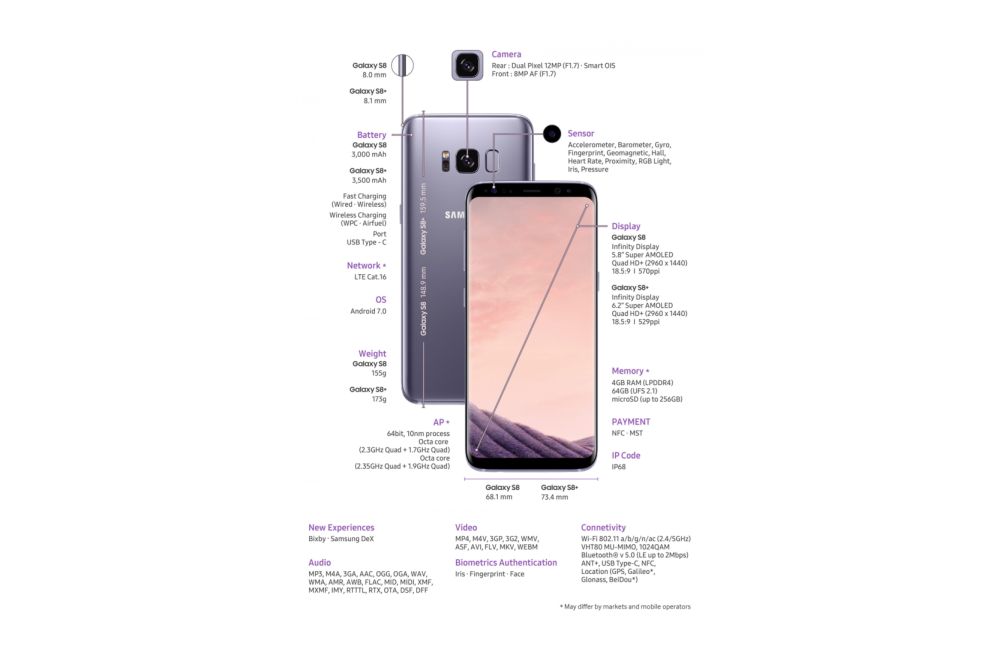
As expected, Samsung’s latest Galaxy S8 and Galaxy S8+ smartphones run on Google’s Android 7.0 Nougat with heavy customization from Samsung TouchWiz UI, which is now known as Samsung Experience.
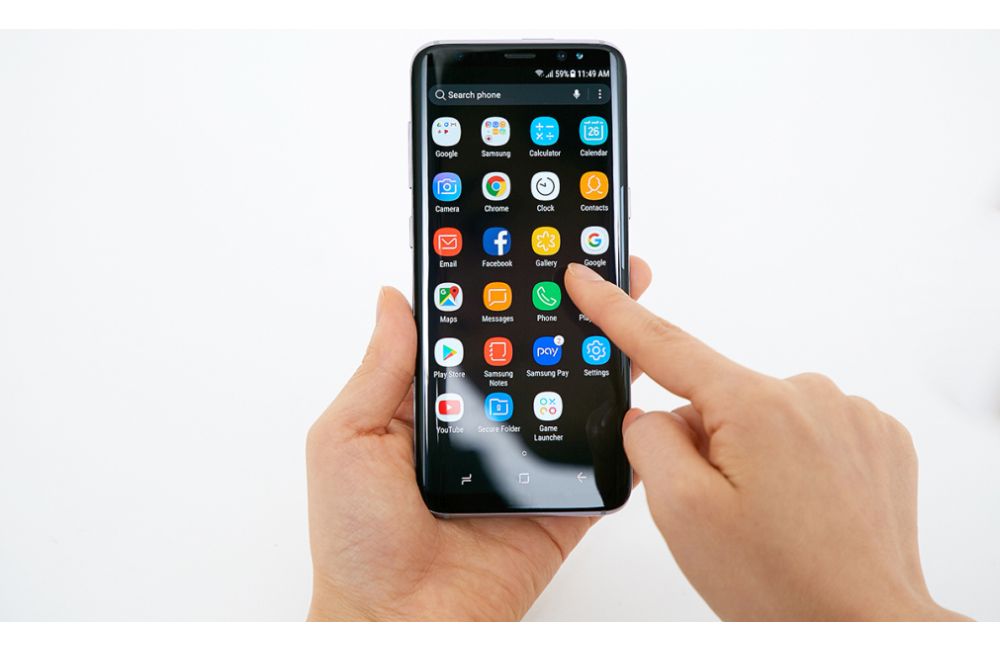
Samsung Bixby, DeX and more
A big part of Samsung’s Unpacked event was focused on its new Google- and Siri-like assistant called the Bixby. We already talked about Samsung’s Bixby earlier, and it is pretty much what we expected it to be, a virtual assistant, like scheduling, basic question responses, product recognition, real-time camera translation and more. Samsung also promised some great things for Bixby in future, including a complete voice control, which sounds quite interesting.
Samsung DeX, short for Desktop EXperience, is an interesting solution which should “transform your smartphone into a desktop” as well as provide “a secure desktop-like experience”. It will use a special dock accessory that can connect to a monitor, keyboard and mouse as well as add two USB ports. Since running Google Nougat in desktop mode is not that great, as you are limited to some apps, Samsung is working with VMware to bring virtual Windows desktop apps to the DeX.
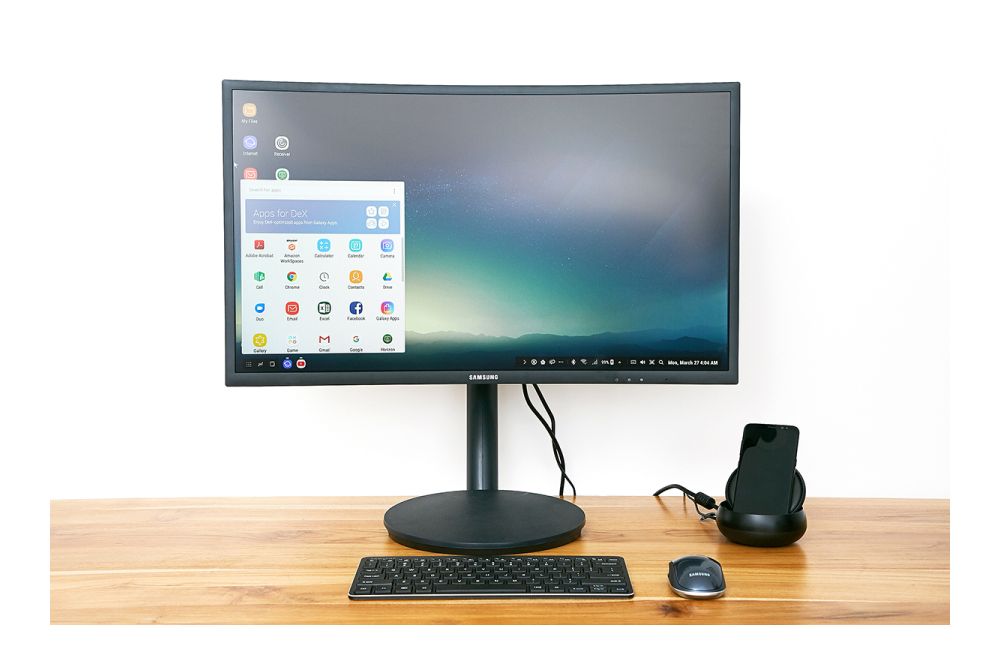
A big part of event was also focused on security and Samsung Pay. It will have standard fingerprint scanner as well as the new iris scanner with support for facial recognition and fast unlock. Samsung said that it has managed to improve security significantly and is currently working on plenty of big names to get its Samsung Pay a bit more popular.
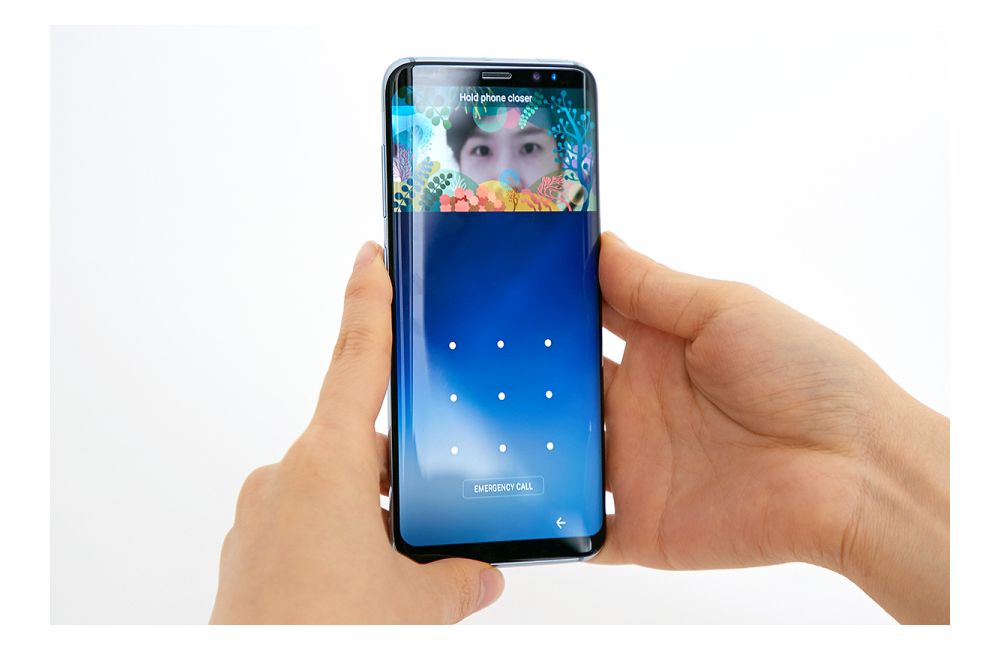
Price, availability and options
According to Samsung, the Galaxy S8 and Galaxy S8+ will be available for pre-order as of March 30th and it will be coming to all the usual carriers and shops. The official shipping date is set for April 21st, so there will be plenty of time to pick one out.
Those that pre-order, will also get a free Gear VR with controller but there will also be plenty of different bundles. Samsung will apparently bundle a pair of AKG earphones worth US $ 100, with each Galaxy S8.
It will be available in five different colors, Black, Orchid Gray, Silver, Blue and Maple Gold, although some of them will not be available in all regions.
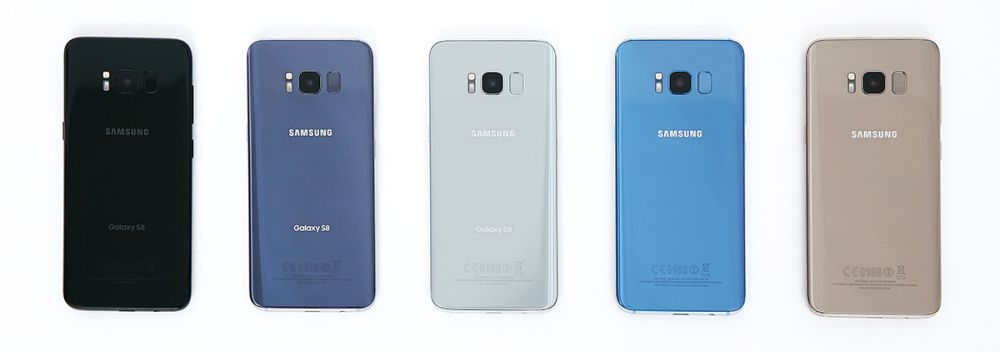
The price starts at US $ 750 for the Galaxy S8 while the Galaxy S8+ will be US $ 100 more expensive, starting at US $ 850. In Europe, the Galaxy S8 starts at €809, while the Galaxy S8+ starts at €909, depending on the country. In the UK, the Galaxy S8 should go for around £689 while the Galaxy S8+ should start at £779.
Hopefully, Samsung’s latest flagships will have a great launch and won’t be plagued by any big issues, or god-forbid, catch on fire.
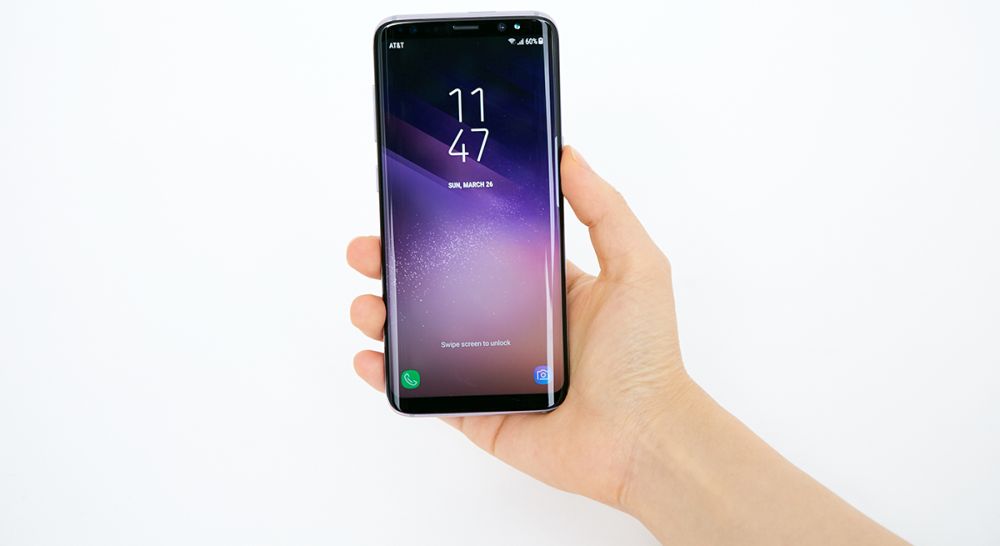
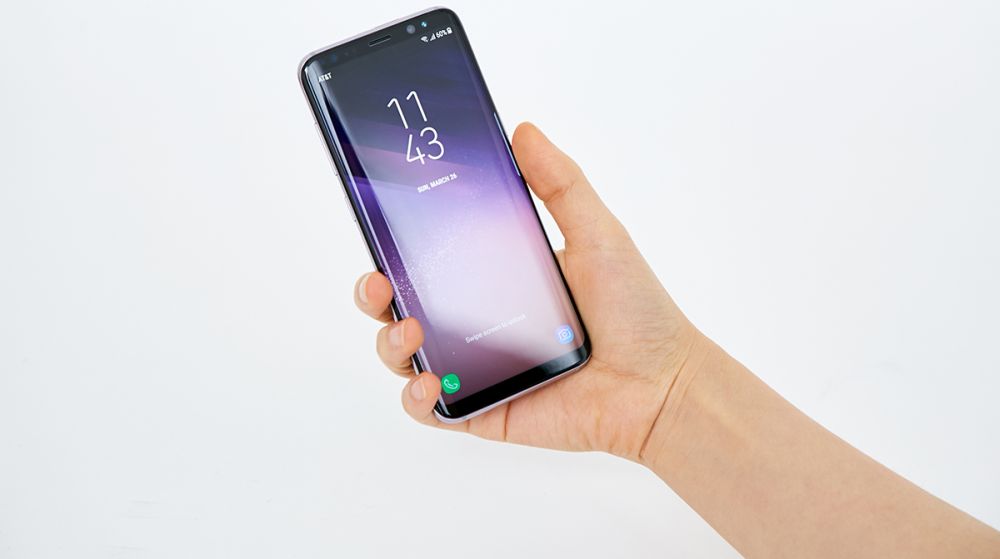

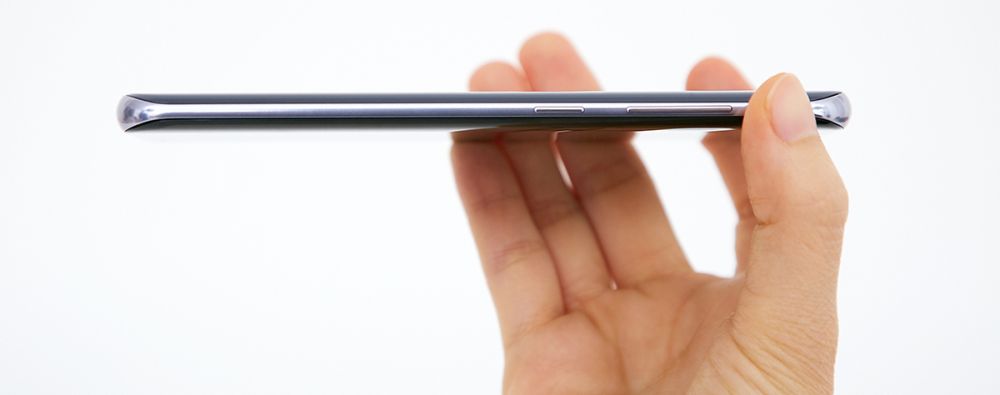
Autore: Fudzilla.com – Home


Durante l’evento Galaxy Unpacked di quest’oggi, Samsung ha tolto il velo dai suoi due nuovi dispositivi di punta: Galaxy S8 e Galaxy S8 Plus.
Dopo aver preferito “saltare” l’appuntamento del Mobile World Congress di Barcellona, Samsung costruisce un evento in grande stile per il lancio dei nuovi smartphone Galaxy S8 e Galaxy S8 Plus.
La società sudcoreana ha scelto la giornata odierna per presentare gli smartphone che dovranno cancellare definitivamente la débâcle Note7.
Samsung punta sull'”effetto wow” con due dispositivi, dal design innovativo – praticamente sprovvisti di cornici, con il display che occupa tutto lo spazio frontale -, che differiscono in primis per la dimensione dello schermo: il Galaxy S8 propone una diagonale da 5,8 pollici mentre la versione Plus si spinge fino a 6,2 pollici.
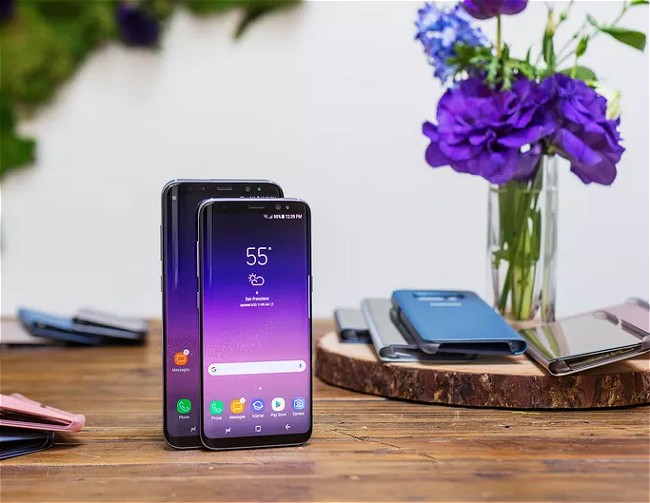
Entrambi i prodotti saranno disponibili sul mercato a partire dal prossimo 30 marzo. I prezzi sono ancora “incerti” e, come sempre, Samsung punta sulla collaborazione degli operatori di telefonia mobile.
Galaxy S8: ecco come si presenta
Samsung lo chiama infinity display: impossibile non darle ragione.
Lo schermo dei due device occupa praticamente la totalità dello spazio disponibile con un rapporto screen-to-body davvero portato all’estremo.
I quattro angoli dello schermo sono leggermente ricurvi così da rendere i dispositivi più eleganti e, allo stesso tempo, conferire una maggiore resistenza al display stesso.
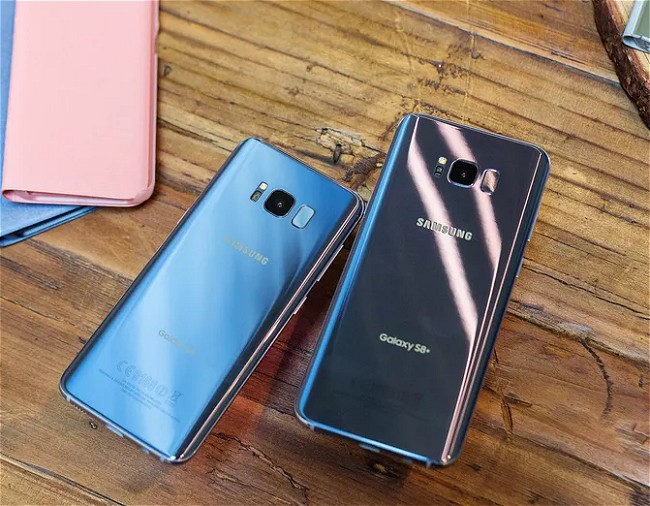
Estendere lo schermo quasi fino al bordo inferiore ha come conseguenza la rimozione del tasto Home. Come accade in altri smartphone Android, i pulsanti sono tutti “software” e viene impiegato una sorta di feedback aptico, un po’ come avviene sugli iPhone.
L’obiettivo è, evidentemente, quello di dare all’utente la sensazione di premere un tasto “fisico”.
In modalità a schermo intero, basterà premere fermamente la parte inferiore del display per richiamare la pressione del tasto Home “virtuale”.
Il lettore di impronte digitali è stato posizionato, com’era ovvio, nella parte posteriore del telefono, appena a destra della fotocamera. La posizione del lettore non è eccezionale, anche perché è posizionato molto in alto. Ma tant’è.
Il connettore USB-C e il jack cuffia da 3,5 mm sono entrambi posti nella parte inferiore dello smartphone. Sotto ai tasti per la regolazione del volume, spicca il pulsante per l’attivazione dell’assistente digitale Bixby (Bixby è l’assistente digitale di Samsung, al debutto con il Galaxy S8. Come funziona).
La dotazione hardware
A seconda della nazione in cui il Galaxy S8 verrà acquistato, il processore in dotazione potrebbe essere il nuovo SoC Qualcomm Snapdragon 835 oppure il Samsung Exynos 8895 di ultima generazione.
In entrambi i casi si tratta di processori realizzati ricorrendo a un processo costruttivo a 10 nm; accorgimento che dovrebbe garantire anche un più contenuto consumo energetico.
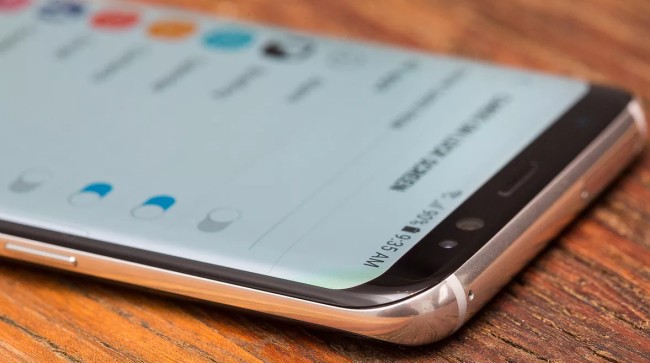
Il Galaxy S8 “di base” dispone di uno schermo da 5,8 pollici 570 ppi con una risoluzione di 2960×1440 pixel. Il modello Plus utilizza esattamente la stessa risoluzione ma in questo caso lo schermo da 6,2 pollici offre 529 ppi.
La proporzione dello schermo è insolita: 18,5:9 che rende i nuovi S8 più “allungati” rispetto agli altri prodotti disponibili sul mercato.
E nonostante le diagonali più generose, il nuovo S8 risulta addirittura più compatto rispetto al precedente Galaxy S7 Edge.
In termini di memoria RAM, Samsung prevede 4 GB mentre 64 GB sono messi a disposizione come storage (espandibili grazie alla presenza dello slot micro SD).
Le batterie sono state realizzate, a detta di Samsung, con particolare attenzione senza – questa volta – dare nulla per scontato. I controlli sono stati resi molto più ferrei e, grazie a una composizione chimica migliore, le batterie avrebbero un’autonomia nettamente maggiore.
Per il Galaxy S8 è stata scelta una batteria da 3.000 mAh mentre per il Galaxy S8 Plus una da 3.500 mAh.
La fotocamera principale, da 12 Megapixel, usa lo stesso sensore del Galaxy S7 ma risulta decisamente più veloce nello scatto rispetto a quella che equipaggia il Galaxy S7 Edge.
Software e Bixby
Samsung è nota per realizzare hardware di ottima fattura ma le sue personalizzazioni software, spesso, hanno in passato lasciato “l’amaro in bocca”.
Non è il caso dei nuovi Galaxy S8 che presentano un’interfaccia TouchWiz ampiamente rinnovata per adattarsi al design borderless ma che mette da parte quelle “forzature” che avevano contraddistinto le precedenti versioni.
La novità più importante sul versante software – oltre alla possibilità di attivare il riconoscimento facciale e lo sblocco del telefono previa analisi dell’iride – è però, senza dubbio, il nuovo assistente digitale Bixby che può essere avviato premendo il pulsante posto sul lato dello smartphone.
Un tocco veloce permette di accedere alla home di Bixby (lo stesso risultato si può ottenere con un’operazione di swiping dall’home screen); tenendo premuto, si richiamano le funzionalità di riconoscimento vocale; un piccolo pulsante nell’app Fotocamera consente di accedere invece alle esperienze di realtà aumentata.
A questo punto, dopo il lancio del prodotto, bisognerà ovviamente verificare se e in quale misura Bixby riesca a “staccare” la concorrenza.
Galaxy S8 e Galaxy S8 Plus possono essere preordinati al prezzo, rispettivamente, di 829 euro e 929 euro. Le consegne inizieranno dal prossimo 28 aprile.
Autore: IlSoftware.it
Microsoft rilascerà il nuovo Creators Update per Windows 10 dal prossimo 11 aprile. La notizia è finalmente ufficiale e tutti coloro che vorranno potranno gratuitamente da tale data aggiornare i propri dispositivi in totale libertà. Il nuovo aggiornamento, nome in codice Redstone 2, è il secondo più importante update della nuova piattaforma di Windows 10 e permetterà agli utenti di liberare la propria creatività e animare le proprie idee attraverso una serie di nuovi strumenti realizzati ad hoc da Microsoft.
In questo caso il nuovo Creators Update per Windows 10 permetterà di avere novità in seno al 3D con nuove funzionalità per la Mixed Reality, semplicità e interattività grazie a Beam per quanto riguarda Game Braodcasting ma anche più sicurezza e velocità per Microsoft Edge con un’esperienza di navigazione ottimizzata ed infine nuovi sistemi di protezione per la privacy e per la sicurezza studiati a perfezione per ogni tipo di attacco esterno.
L’aggiornamento Creators Update per Windows 10 introdurrà uno dei più attesi software scomparsi con gli ultimi aggiornamenti della piattaforma Windows. Parliamo di Paint che con oltre 100 milioni di utenti al mese, è divenuto uno degli strumenti di creazione più diffusi al mondo. Ora grazie al nuovo aggiornamento verrà reintrodotto in Windows 10 e diverrà Paint 3D e permetterà agli utenti di creare dal nulla oggetti 3D, cambiare i colori, i motivi di stampa o convertire un’immagine bidimensionale in un’opera tridimensionale. Non solo perché si potrà scegliere su Remix3D.com modelli 3D preconfezionati, in una libreria online in continua crescita, o condividere le proprie creazioni. Grazie al 3D presente con il nuovo aggiornamento si potrà finalmente rappresentare il mondo nella sua reale dimensione, imparare più velocemente e in modo più divertente.

L’aggiornamento Windows 10 Creators Update consente esperienze immersive che rendono meno netto il confine tra il mondo fisico e quello virtuale. Nel corso di quest’anno, Acer, ASUS, Dell, HP e Lenovo offriranno visori abilitati alla Mixed Reality. Questi visori saranno dotati di sensori integrati, a sei gradi di libertà, un setup semplificato e libertà di movimento senza l’esigenza di segnali esterni o sensori alle pareti. Esperienze nuove ed immersive di Windows che gli sviluppatori potranno creare, avvalendosi dei kit di sviluppo di Windows Mixed Reality recentemente messo a disposizione, e che potranno cambiare il mondo “reale e virtuale”.
Grazie a Creators Update sarà possibile avviare velocemente lo streaming della partita utilizzando la barra di gioco senza bisogno di effettuare ulteriori log-in. Con il nuovo aggiornamento tutti potranno diventare broadcaster o seguire su Xbox Live gli streaming live delle partire e i tornei personalizzati di eSport. L’integrazione del sistema Beam consente il broadcasting interattivo e la visualizzazione di partite su Xbox Live, per seguire gli streamer preferiti mentre giocano, interagendo con loro in tempo reale senza bisogno di installare software o periferiche aggiuntive.

Da non dimenticare che tramite il Game Mode sui PC Windows 10 si potranno anche vivere le migliori esperienze di gioco. In sviluppo oltretutto vi è anche il trasferimento da Windows 10 alla Xbox One della funzione family timer, per limitare il tempo trascorso davanti allo schermo, in modo da consentire l’impostazione del tempo concesso e dei limiti giornalieri attraverso diversi account Microsoft.
Microsoft Edge è il browser di default di Windows 10 e con il nuovo Creators Update l’azienda di Redmond ha cercato di renderlo ancora più veloce e ancora più sicuro. Il tutto mantenendo se non aumentando la durata della batteria dei laptop che lo utilizzano. Microsoft Edge blocca il 9% in più dei siti di phishing e il 13% in più di malware, contribuendo così a proteggere informazioni e identità.

Con Creators Update sono state aggiunte nuove funzionalità che mancavano come la gestione avanzata delle schede che, si aprono a destra della pagina e possono essere facilmente individuate, organizzate e aperte, senza dover lasciare la pagina su cui si sta lavorando. E’ ora possibile scoprire e leggere gli e-book preferiti dalla sezione Books del Windows Store. Inoltre, Microsoft Edge è l’unico browser in grado di visualizzare serie TV e film di Netflix in 4K Ultra HD.
L’aggiornamento porterà anche novità in seno alla sicurezza e dunque alla protezione. La nuova dashboard Windows Defender Security Center integrata in Windows 10 Creators Update offre una panoramica dello stato di salute, della sicurezza e della protezione online del dispositivo.
Creators Update offrirà dunque un nuovo servizio per il monitoraggio della sicurezza: il Windows Defender Security Center. Sarà un punto di riferimento unico per il controllo delle opzioni di sicurezza: dalla protezione firewall, anti-virus e di rete alla valutazione delle prestazioni e dello stato di salute del dispositivo, dai controlli di sicurezza per le app alle opzioni di Family Safety. Oltretutto il Device Health Advisor fornirà informazioni sui segni vitali del dispositivo, la funzionalità Remote Lock bloccherà automaticamente il dispositivo all’allontanarsi del proprietario e sono previste nuove impostazioni per un maggiore controllo sull’installazione delle app.
Autore: Le news di Hardware Upgrade


Corsair last week started to sell its first Vengeance RGB memory modules, equipped with full sets of RGB LEDs that can change their colors using OS software. Right now Corsair offers DDR4-2666 and DDR4-3000 modules, but eventually we expect the Vengeance RGB lineup will be expanded.
Just like other Vengeance memory modules, the Vengeance RGB DIMMs are based on Corsair’s custom PCBs as well as preselected ICs. The modules come with aluminum heat spreaders featuring RGB LEDs that can change colors dynamically using the Corsair Link software, allowing users to synchronize colors of RGB lighting of their DIMMs and specific motherboard brands. Lighting of each module can be controlled separately as well. The lighting of the Vengeance RGB can also be controlled using GIGABYTE’s RGB Fusion app and Corsair states that eventually other producers of LED-controlling software are expected to follow.
At first, Corsair will offer 16 GB dual-channel as well as 32 GB and 64 GB quad-channel Vengeance RGB kits consisting of two, four and eight 8 GB modules (they are based on 8 Gb DDR4 ICs), respectively. The DIMMs are rated to run at 2666 MT/s with CL16 18-18-35 timings and at 3000 MT/s with CL15 17-17-35 latencies. The DDR4-2666 modules feature 1.2 V power supply, whereas the DDR4-3000 DIMMs require the higher DDR4 standard of 1.35 V.
| Corsair Vengeance RGB DDR4 DIMMs and Kits | |||||||||
| Data rate | Latency | Kit Capacity | Modules | Voltage | Part Number | Launch Price | |||
| 2666 MT/s | CL16 18-18-35 | 16 GB | 2x8GB | 1.2 V | CMR16GX4M2A2666C16 | $ 194.99 | |||
| 32 GB | 4x8GB | CMR32GX4M4A2666C16 | $ 384.99 | ||||||
| 64 GB | 8x8GB | CMR64GX4M8A2666C16 | $ 764.99 | ||||||
| 3000 MT/s | CL15 17-17-35 | 16 GB | 2x8GB | 1.35 V | CMR16GX4M2C3000C15 | $ 199.99 | |||
| 32 GB | 4x8GB | CMR32GX4M4C3000C15 | $ 389.99 | ||||||
At present, Corsair’s Vengeance RGB memory modules are equipped with XMP 2.0-compatible profiles, optimized for Intel X99, Z170 and Z270 platforms. Eventually Corsair plans to expand the lineup with something faster than DDR4-3000. In addition, Corsair intends to announce AMD Ryzen-compatible Vengeance RGB DIMMs as well “soon”, but the company does not disclose timeframes or specifications of the upcoming products.
It is noteworthy that the non-RGB based Vengeance monochromatic LED modules announced last year are now available at up to 3466 MT/s.
Prices of Corsair’s Vengeance RGB DRAM kits depend on specifications and capacity. Memory chips have risen in price compared to a year ago, and on top of this, companies like Corsair will charge a premium for customizable RGB lighting.
Related Reading:
Autore: AnandTech

